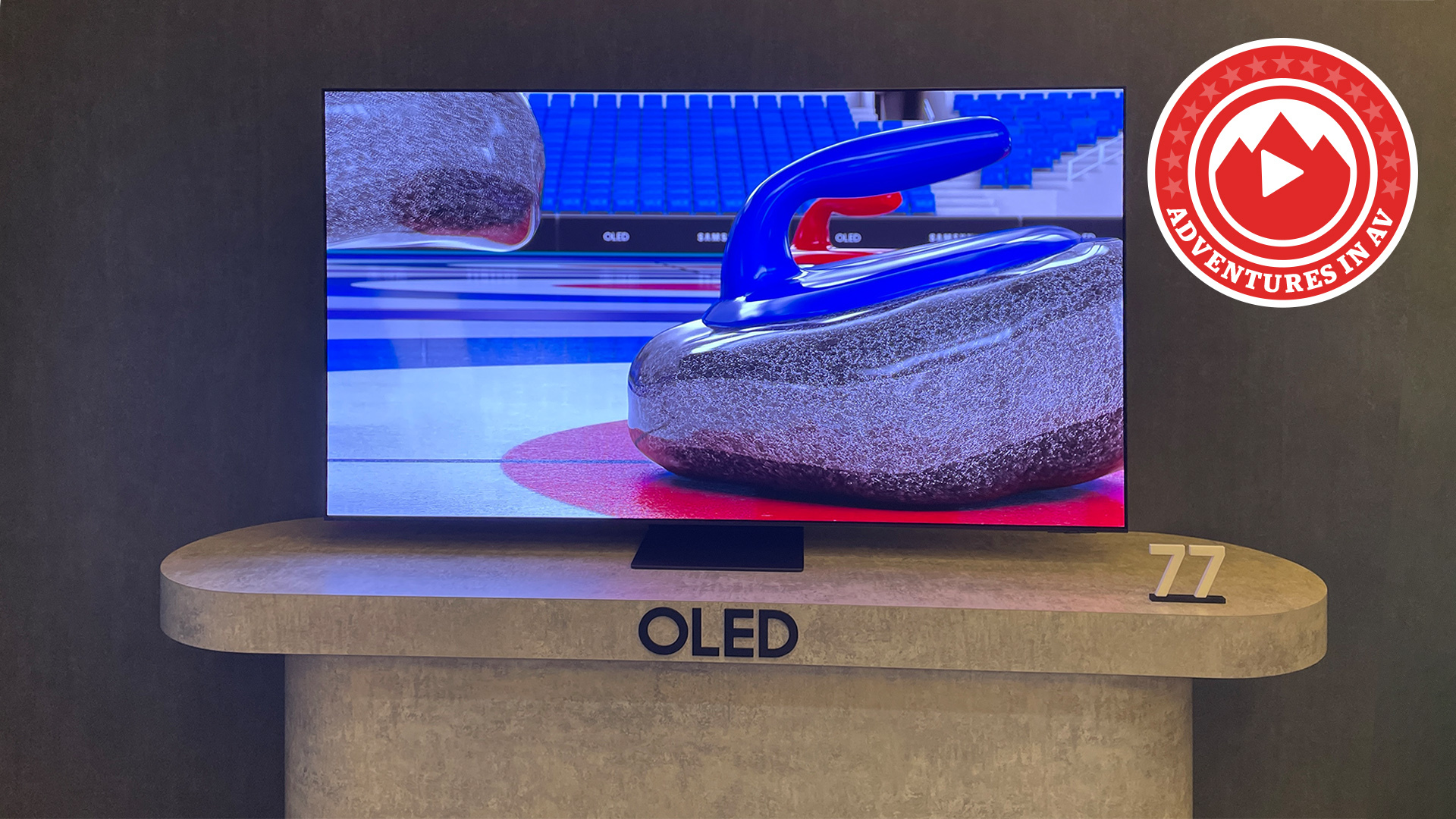CES 2024 proves Samsung and LG's best OLED TV tech isn’t going down in price anytime soon
MLA and QD-OLED screen panels remain a flagship luxury, at least for now

CES 2024 has kicked off the home cinema year with a bang, with huge TVs including the flagship LG G4, Samsung S95D and Panasonic Z95A making their debut at the tech tradeshow in Las Vegas.
And while our team reporting from the showroom floor found plenty to get excited about during their opening looks at the top-of-the-line new sets, one sad fact became increasingly apparent – it doesn’t look like the top-of-the-line MLA or QD-OLED panels seen on last year’s flagships is going down in price any time soon.
For readers unfamiliar with the ins and outs of OLED TV tech, Micro Lens Array (MLA) and QD-OLED are competing technologies with one shared aim – to radically boost the maximum brightness possible on OLED panels.
QD-OLED is a technology built by Samsung that’s been around for a couple of years. It powers the company’s newly unveiled flagship, the Samsung S95D as well as Sony’s 2023 hero TV, the Sony A95L. It combines traditional OLED panel tech with Samsung’s Quantum Dots to help boost a TV's maximum brightness.
MLA is a display made by LG Display that made its debut last year on the LG G3, Panasonic MZ2000 and Philips OLED 908. It boosts max brightness levels by placing a layer of microscopic lenses on top of a traditional OLED panel’s pixels.
Having tested both technologies thoroughly we can confirm both work brilliantly. On every MLA set we tested we noticed a clear boost in max brightness levels, especially when comparing the MLA-sporting LG G3 to the older LG G2.
On the other side of the ring, the additional brightness and improved colour accuracy offered by the second generation QD-OLED panel used on the Sony A95L impressed our TV expert, Tom Parsons, enough for him to call it “the new benchmark” for OLED TVs.
Get the What Hi-Fi? Newsletter
The latest hi-fi, home cinema and tech news, reviews, buying advice and deals, direct to your inbox.
The only downside to both technologies is that they were limited to a very select, very expensive family of flagship TVs – which made them an expensive luxury even by our standards and was the main reason our best TV guide and 2023 Award winners were dominated by more affordable, traditional OLED sets like the Sony A80L.
The high price of the next-generation OLEDs is also why it was no surprise our forums, Reddit, and the internet in general were rife with speculation about whether LG and Samsung in particular would bring the technologies down in price in 2024. Specifically, whether MLA would feature on the LG C4 and QD-OLED on the Samsung S90D.

As a C2 owner, I can attest to having a glimmer of hope this would happen in 2024. After all, we’ve seen this happen numerous times in the past with things like HDMI 2.1 connectivity, variable refresh rates and eARC support which first appeared on flagships before trickling their way down to more affordable sets a year later. The pattern’s always been that the tech starts on a flagship before trickling down the line each year.
And CES 2024 would have been the perfect time to do this, with Samsung, LG and Panasonic having always used the show to launch their respective TV offerings for the year.
But sadly, instead of that occurring, we’ve seen very modest changes to this year’s mid-tier OLEDs. The LG C4 has identical connectivity to the C3, with the only big changes being a slightly upgraded processor and 144Hz, rather than 120Hz max refresh rate. The panel remains a basic OLED Evo, without MLA.
It’s a similar story with the S90D, where the most interesting change is the fact Samsung’s now offering it in a smaller 48-inch option. While it’s great to see more small OLED TVs on the market – in the UK not everyone can fit a 55-inch, let alone 65-inch TV into their lounge – it’s hardly as exciting as seeing QD-OLED appear on a cheaper set.
Panasonic’s done the same with its current line, choosing to only add MLA to its flagship Z95A OLED set, leaving the Z93A without it.
I'll admit that this is a first-world problem. But given how small the changes to last year’s mid-tier OLED TVs were, especially when comparing the LG C3 and LG C2, I can’t help but feel a little disheartened that OLED TV makers have forgotten how important the mid and even entry-level market is – especially during a cost of living crisis where it’s difficult for most people to justify the £1000 / $1000-plus you’d need to get a mid-tier TV, let alone the £2000 / $2000-plus you need for a flagship.
Hopefully, this won’t remain the case for the whole year, and Sony and Philips are yet to unveil their 2024 OLED offerings. But either way, I can’t help but feel LG and Samsung missed a trick at CES this year by not doing more in the mid-tier market.
MORE:
These are the best small TVs we’ve tested
Our picks of the best 55-inch TVs money can buy
We detail the best gaming TVs we’ve reviewed

Alastair is What Hi-Fi?’s editor in chief. He has well over a decade’s experience as a journalist working in both B2C and B2B press. During this time he’s covered everything from the launch of the first Amazon Echo to government cyber security policy. Prior to joining What Hi-Fi? he served as Trusted Reviews’ editor-in-chief. Outside of tech, he has a Masters from King’s College London in Ethics and the Philosophy of Religion, is an enthusiastic, but untalented, guitar player and runs a webcomic in his spare time.
